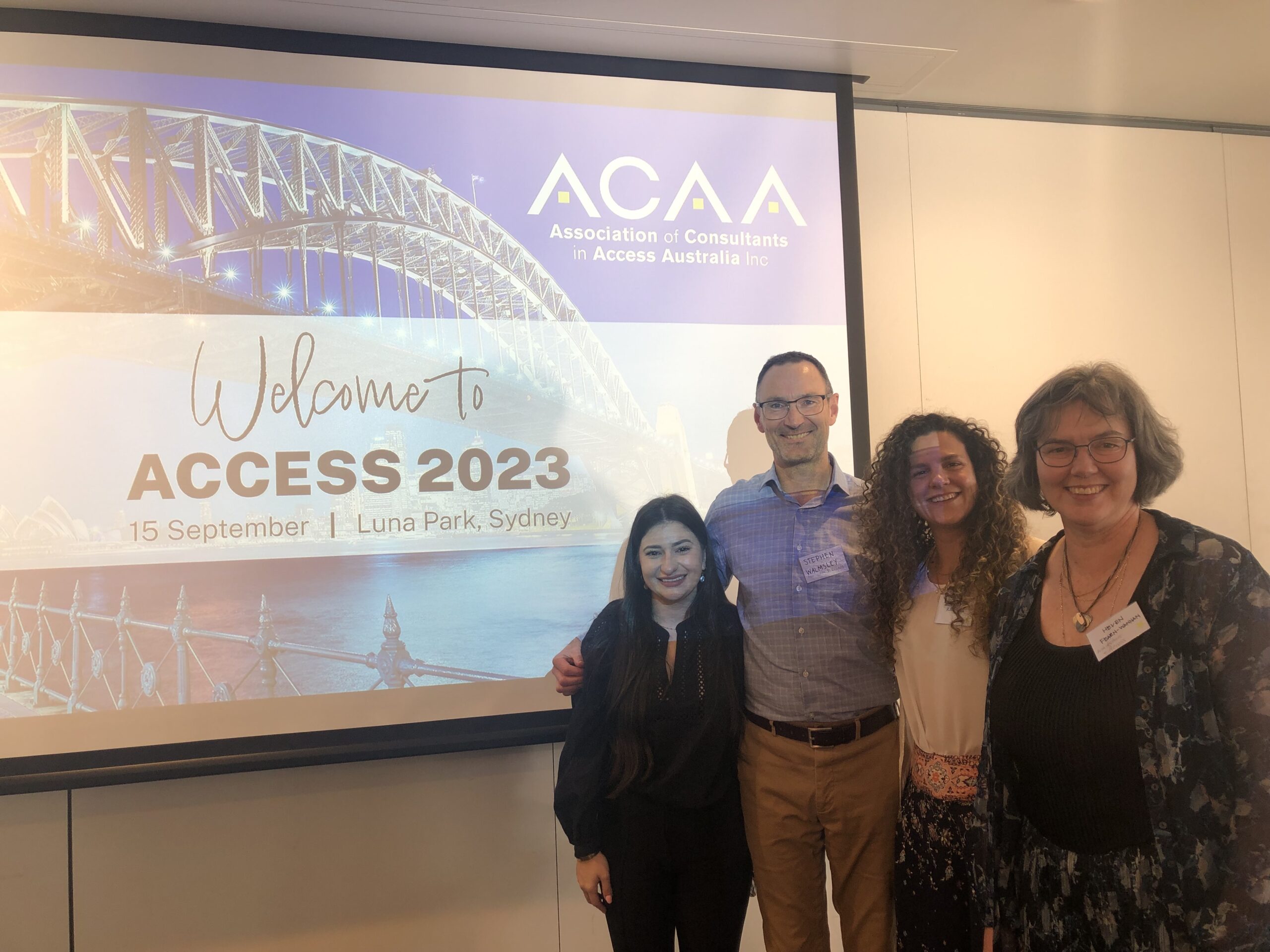Lifts, car parking, navigating streetscapes with a vision impairment, accessible sanitary facilities and neurodiverse environments
For the first time since 2019, ACAA held their Conference and four members of the Architecture & Access team travelled to Luna Park in Sydney to attend with other team members joining online.
Presentations were given on six different topics which included upcoming changes to the National Construction Code (NCC) and Australian Standards. This includes the new requirements of the NCC for accessible housing in Class 1a and 2 buildings which were discussed in our August 2022 newsletter.
Lifts
Australia represents only 1% of the world market in lifts, hence the impact of our own Australian Lift Standards on the world market is limited. The adoption of the European Lift Standard EN81-70 presents some challenges where the requirements of this standard are less than those of the current NCC.
Lifts with destination controls provide greater efficiencies for travel times and energy. Within an office building, an employee who has a disability can be given a swipe access control. This allows the lift to be programmed to reduce the numbers of people within a lift and provide greater door opening times, achieving greater ease of access.
Destination control systems however can present challenges for people with vision impairments. Locating the central control panel in a lift lobby can be challenging. Once found, the access button will typically provide visual and auditory information, however the provision of auditory information can be slow and is not considered dignified by some people.
Architecture & Access consider destination control systems should only be used in environments where people will be familiar with the building, including offices or residential buildings. Their use in shopping centres and hospitals is not considered suitable.
Car Parking
The update of the car parking standard includes the requirement for the width of the accessible car park space to be increased by an additional 300mm where the car space is located adjacent to a wall or other obstruction. Greater flexibility for the location and size of the bollard within the shared area is also provided within the new Standard.
Electric vehicles are becoming increasingly popular so charging stations and accessible charging stations are needed. Consideration needs to include sufficient space around a vehicle to manoeuvre from the charging station to the charging point on the car (which varies depending on the make & model of the car).
Advice is currently being developed by Architecture & Access to guide this new area of our built environment.
Navigating Streetscapes with a vision impairment
A presentation from Guides Dogs highlighted the challenge for people with vision impairment of navigating within streetscapes, particularly those with shared pedestrian and vehicular zones. Whilst these shared zones are becoming increasingly popular within street design, the presenter from Guide Dogs demonstrated the safety concerns for people. Guide Dogs advocate for separate footpaths with well-designed kerb ramps.
Use of Accessible Sanitary Facilities
A fascinating presentation of research on the use of accessible sanitary facilities was given. The research showed that people with disabilities will avoid using sanitary facilities as much as possible. Hygiene within the facility was seen to be a vital issue, particularly for those people who require hygienic facilities to catheterise. Common challenges include auto doors that are too sensitive and manual doors that are too hard to use, toilet paper holders that are too low, backrests that assist some people but prevent others using the toilet, floor gradients that are too steep and the risk of a wheelchair rolling away from a person using the toilet. The research showed that using a public accessible sanitary facility resulted in significant levels of stress and the greatest of these was ensuring the door was locked and stayed locked.
Neurodiverse Environments.
Ilianna Ginnis from Architecture & Access presented on her own experience and her PhD research into providing environments that assist people who are neurodiverse. Ilianna’s enthusiasm and passion was infectious and the attendees at the conference are eagerly awaiting the publication of her research.
